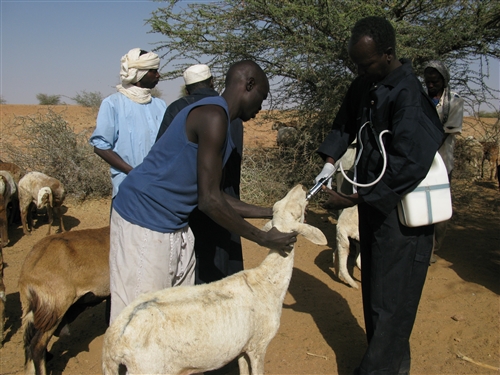

Deworming by drenching is among farm health operations that farmers carry out on their own but one that can be fatal if not done the correct way. That may not be the only issue though; if not appropriately done, the targeted stomach and intestinal worms may be missed. Deworming may look simple but there is anatomical considerations to bear in mind. There are also timing issues and physiological status to consider before drenching your animals. Drenching is a medical term for administration of oral medications to animals. This include dewormers, anti-bloat and drugs for treating diarrheal infections and constipation.
Timing:
Oral dewormers if not given at the right time may be ineffective. Bear in mind that livestock normally have lots of gut content at any given time. This in turn has a dilution effect on liquid dewormers given orally. To mitigate against this, livestock should be dewormed early in the morning. Once dewormed or drenched they should be given sometime before drinking water. This improves effectiveness of the drug by lowering the dilution effect of the gut content.
It is recommended to deworm once in three months but this can be shortened when the worm burden is high. Wet and humid conditions for animals in pasture is a period of greatest worm challenge and strategic deworming should come at such times.
A farmer should use an antihelminth that kills all stages of the helminths. Individual animals with signs of worm infestation should be dewormed immediately.
Recommended dosage: Dewormers come with various dosage ranges depending on type of livestock, the worm burden and types and their respective weights. Most farmers fail to adjust to this dosage when drenching a number of animals. This may result in under-dosing, failing to clear the worms or overdosing which can be fatal to the livestock. When an animal is weak and undernourished, the recommended dosage should be reduced further.
Read the instructions: Always read the manufacturer’s instructions on the label before opening and using the dewormer. Read what the manufacturers say about use at various stages of pregnancy. Most importantly check the expiry date.
How to administer it : This is the most critical point. The animal needs to be well restrained and calm to avoid delivering the dewormed animal the wrong way. Struggling can also lead to the liquid going the wrong way and resulting in aspiration Pneumonia.
Aspiration Pneumonia is hard to treat and can easily result in death. It is better prevented than treated. For correct delivery restrain the animal well. Get your hand through the lateral gap in the lower jaw; then hold the tongue onto the floor of the mouth. With the drench nozal deliver the requisite dose at the base of the tongue and release the tongue for it to assist in swallowing. Most dewormers are sweetened and will be swallowed easily by the animal. Don’t raise the head so high as this makes swallowing hard and can choke the animal.
Animals can be drenched using a large syringe (it helps in getting the dose right), a bottle with a long neck or a drenching gun. Drenching guns have an automated measuring mechanism- adjust to get the right dosage and is suited for large number of animals.
 Contact Jaguza Support
Contact Jaguza Support